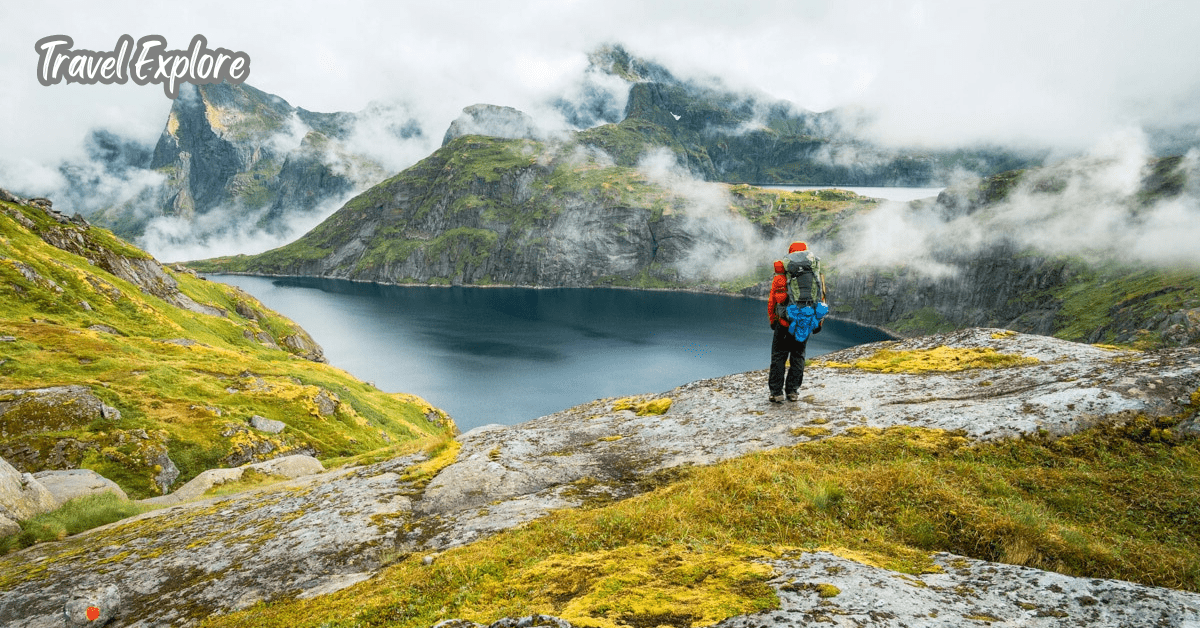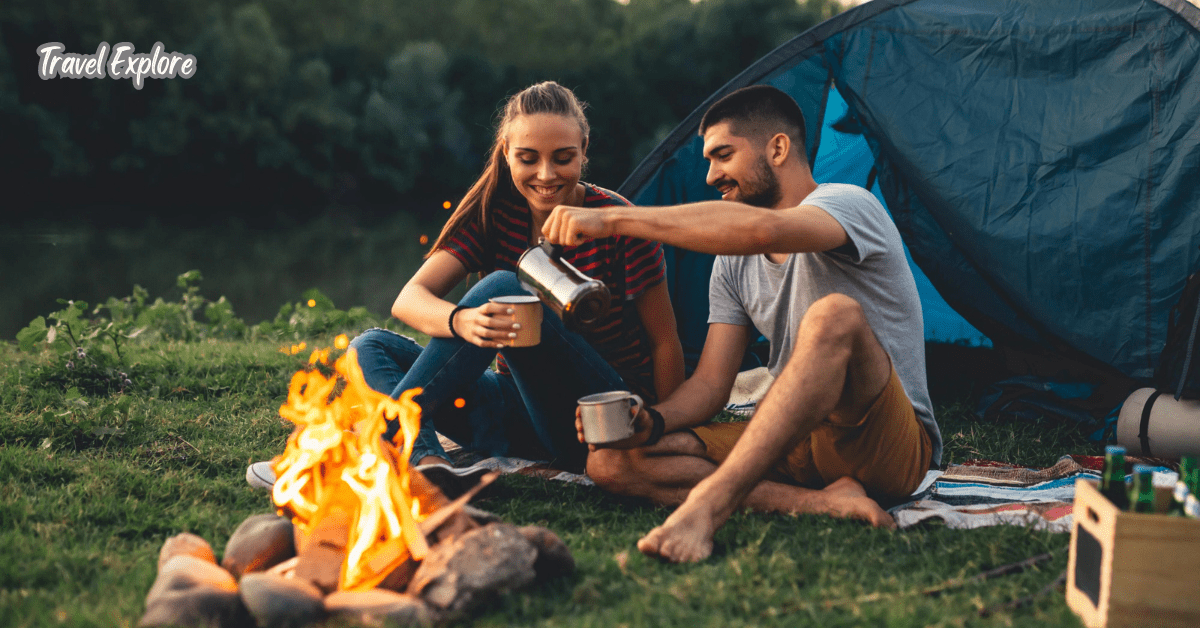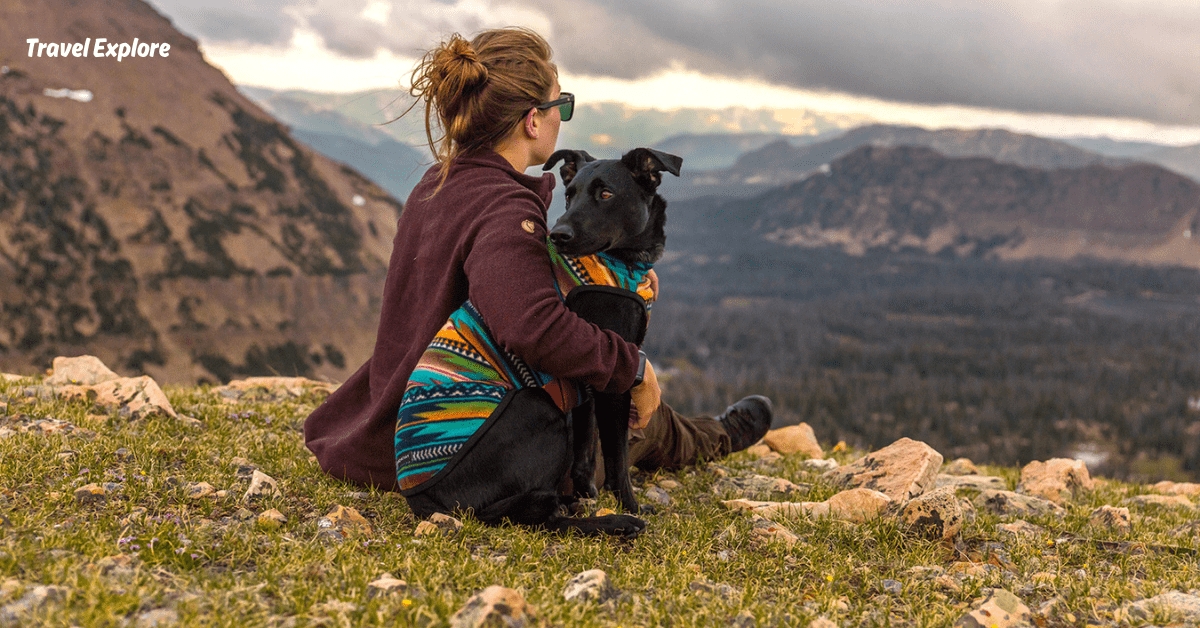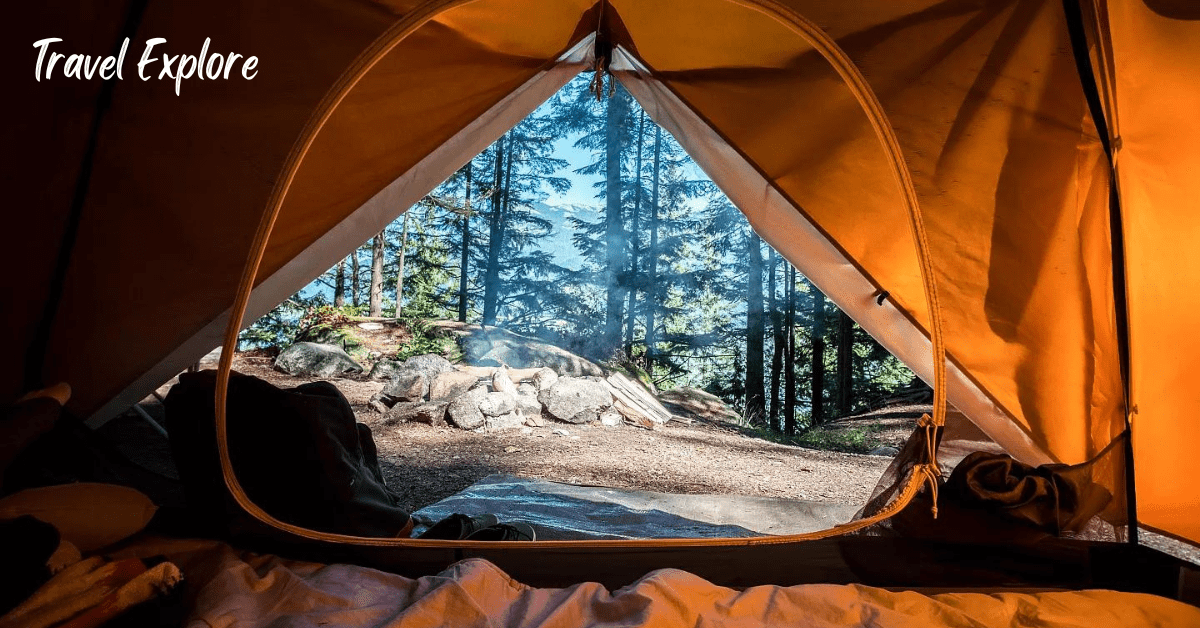What Gear is Essential for Hiking in the Rain?
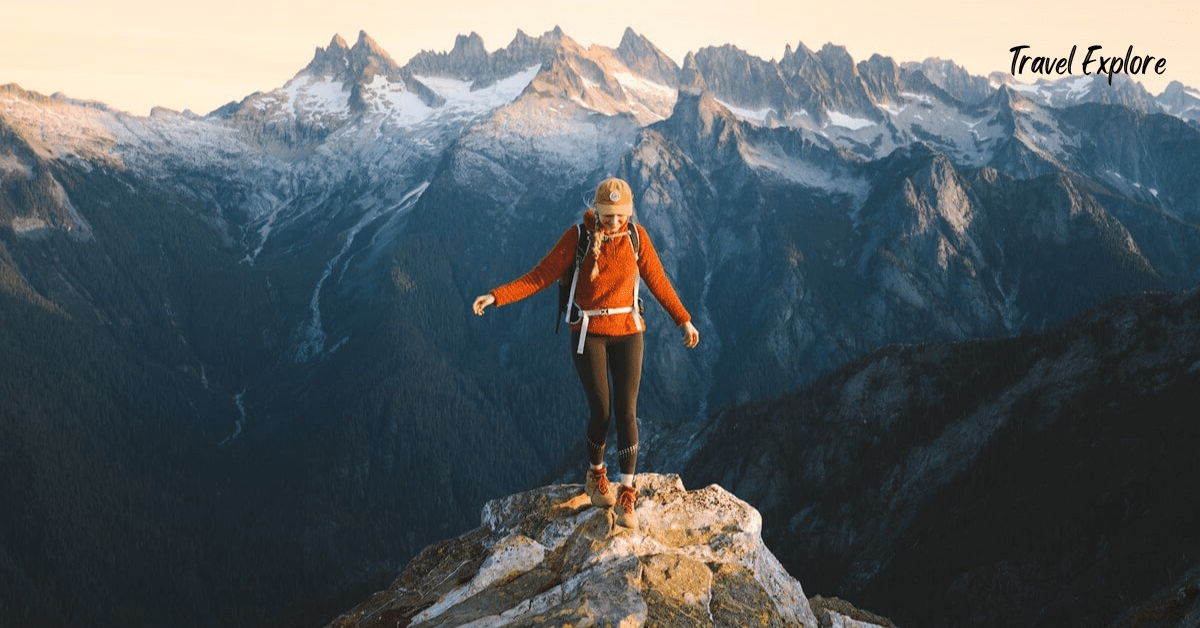
Hiking in the rain can be a thrilling adventure, but it also presents unique challenges that require proper gear and preparation. Whether you’re a seasoned hiker or just starting out, having the right equipment can make all the difference between an enjoyable experience and a miserable one.
Waterproof Clothing
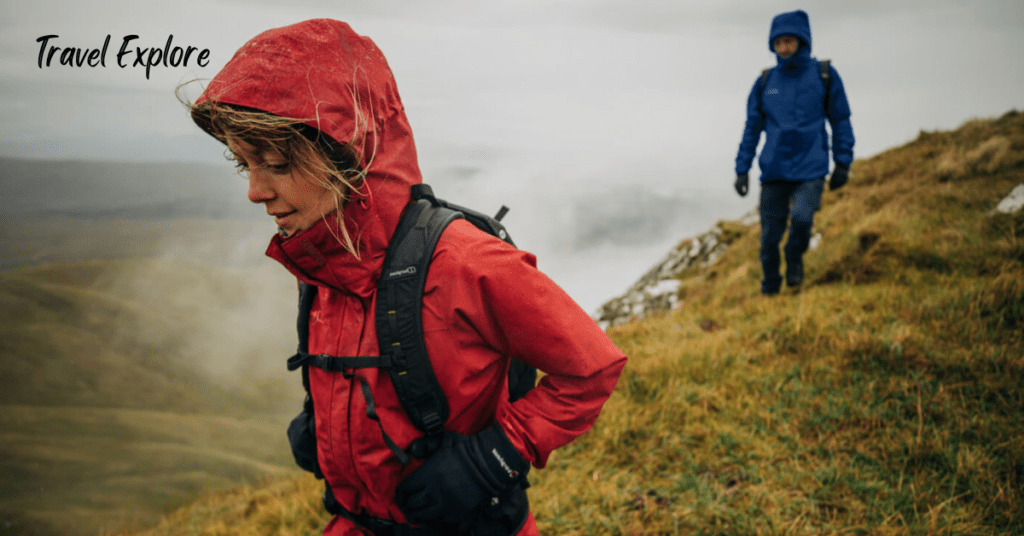
When it comes to hiking in the rain, your choice of clothing can make or break your experience. The key is to stay dry and comfortable while allowing moisture to escape, preventing you from getting soaked from both rain and sweat.
Waterproof Jacket

When hiking in the rain, a waterproof jacket is essential for both comfort and safety. Waterproof jackets are designed to repel water, keeping you dry even in heavy rain. They are typically made from materials like Gore-Tex or similar waterproof membranes that prevent water from penetrating while still allowing moisture from sweat to escape, keeping you from getting soaked from both outside and inside sources.
This is crucial because getting wet in cold or cool temperatures can lead to hypothermia, which is a serious risk when hiking in wet conditions. Moreover, a waterproof jacket provides protection against wind, which can further lower your body temperature and make you feel even colder.
The windproof aspect of these jackets helps to retain your body heat, keeping you warm and comfortable during your hike. Additionally, waterproof jackets often come with adjustable hoods and cuffs, which can be tightened to seal out rain and wind, ensuring that water doesn’t sneak in through these openings.
Some jackets also have ventilation options like pit zips, which allow you to regulate your body temperature and prevent overheating while still keeping you dry. Beyond comfort, a waterproof jacket is also important for safety.
Wet clothing can weigh you down and make movement more difficult, increasing the risk of accidents or injuries on the trail. By staying dry, you maintain better mobility and agility, reducing the likelihood of slips or falls.
Waterproof Footwear
Waterproof footwear is an essential investment for hiking in the rain, offering protection and comfort against the elements. When hiking in wet conditions, whether it’s rain or crossing streams, waterproof footwear keeps your feet dry, preventing discomfort and potential health issues like blisters and fungal infections.
These shoes are typically made with materials like Gore-Tex or other waterproof membranes that repel water while still allowing your feet to breathe, ensuring they stay dry from both external moisture and sweat.
This is crucial for maintaining warmth and avoiding hypothermia in cold and damp environments. Additionally, waterproof hiking shoes often have rugged outsoles with deep treads, providing excellent traction on slippery surfaces like wet rocks and muddy trails, thus reducing the risk of slipping and falling.
The ankle support in many waterproof hiking boots also helps stabilize your feet and ankles on uneven terrain, reducing the risk of sprains. Overall, investing in waterproof footwear for hiking in the rain not only enhances your comfort but also significantly improves your safety and enjoyment of outdoor adventures.
Shelter and Protection

In addition to waterproof clothing, having the right shelter and protection can make a significant difference in your comfort and safety while hiking in the rain.
Waterproof Backpack
A waterproof backpack or a rain cover for your existing pack is essential for keeping your gear dry. Look for backpacks made from water-resistant materials like ripstop nylon, and consider using dry bags or stuff sacks for extra protection for your gear inside the pack.
Hiking in the rain presents its own set of challenges, and having a waterproof backpack is essential for keeping your gear dry and protected. A waterproof backpack is designed to prevent water from seeping through the fabric and into the compartments, ensuring that your belongings remain safe even in heavy downpours.
The outer material of a waterproof backpack is typically made of water-resistant nylon or polyester, which repels water on contact. Additionally, most waterproof backpacks feature sealed seams and zippers, which further prevent water from getting inside.
When hiking in the rain, moisture can seep into non-waterproof backpacks, leading to soggy clothes, wet electronics, and potentially damaged gear. With a waterproof backpack, you can confidently carry important items like clothing, food, electronics, and first aid kits without worrying about them getting wet.
Moreover, a waterproof backpack often comes with additional features like padded shoulder straps and back panels for comfort, as well as multiple compartments and pockets for organized storage.
This not only keeps your gear dry but also easily accessible during your hike. Whether you’re trekking through a rainforest, climbing a misty mountain, or simply caught in a sudden shower on the trail, a waterproof backpack is your reliable companion for keeping your belongings safe and dry throughout your outdoor adventures.
Trekking Umbrella

While not everyone prefers them, a trekking umbrella can provide excellent protection from the rain, especially in areas with light to moderate rainfall. Choose a lightweight and compact umbrella that attaches securely to your backpack or trekking poles.
Trekking with an umbrella while hiking in the rain might seem unconventional at first, but it’s a practical solution that offers several advantages. Unlike rain jackets or ponchos, which can sometimes feel restrictive and cause overheating, using an umbrella allows for better ventilation, keeping you cooler and more comfortable during your trek.
It also provides excellent coverage, protecting not just your upper body but also your backpack and gear from getting soaked. This is particularly useful if you’re carrying electronics, maps, or other items that could be damaged by water.
Additionally, an umbrella can offer relief from the psychological discomfort of being surrounded by rain, helping to maintain morale during a wet hike. However, it’s important to choose a sturdy, wind-resistant umbrella designed for outdoor use, as strong winds can easily turn a flimsy umbrella inside out.
Moreover, trekking with an umbrella requires some skill, as you’ll need to coordinate your movements to ensure it stays over your head and doesn’t get caught on branches or other obstacles.
Overall, while it might not be the first choice for everyone, using a trekking umbrella while hiking in the rain can be a practical and comfortable option for staying dry and enjoying the outdoors.
Navigation and Communication
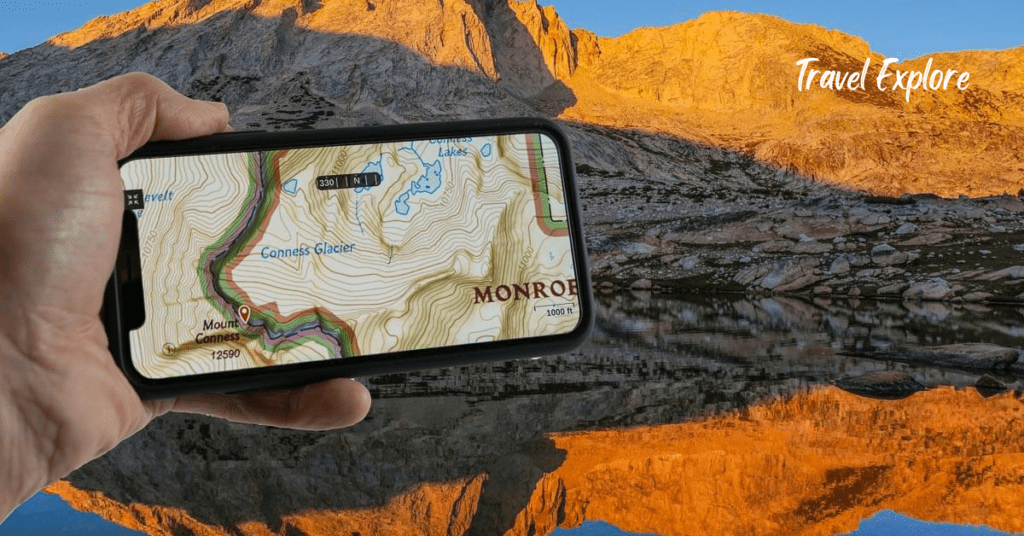
iking in the rain can sometimes make navigation more challenging, especially if trails become obscured or waterlogged. Additionally, staying connected in case of emergencies is essential.
Waterproof Phone Case
To keep your smartphone safe from water damage, invest in a waterproof phone case or a dry bag. This allows you to access important apps like weather forecasts and emergency contacts even in rainy conditions.
While hiking in the rain, a waterproof phone case is essential to protect your device from water damage. Rain can be unpredictable, and even a short downpour can ruin an unprotected phone.
A waterproof phone case provides a barrier against moisture, preventing water from seeping into the delicate electronic components of your phone. These cases are typically made from durable materials like plastic or rubber, with secure seals around the edges to keep water out.
They often feature transparent screens that allow you to use your phone without removing it from the case, so you can still navigate trails, check maps, or take photos without risking water damage.
Additionally, some waterproof cases come with added features like lanyards or clips to secure your phone to your gear, ensuring it stays safe and easily accessible during your hike. Overall, investing in a waterproof phone case provides peace of mind, allowing you to enjoy your outdoor adventures without worrying about the safety of your device.
Emergency Whistle

A loud emergency whistle can be a lifesaver in case you get lost or injured on the trail. Choose one that’s made from durable materials and can be heard from a distance. When hiking in the rain, having an emergency whistle can be a crucial safety measure.
Rainy conditions can reduce visibility and make it harder to hear, especially if you’re in a remote area. An emergency whistle provides a loud and piercing sound that can carry over long distances and through the noise of rain and wind.
If you get lost or injured, the whistle can alert rescuers to your location far more effectively than shouting. It’s essential to keep the whistle easily accessible, ideally on a lanyard around your neck or attached to your backpack where you can quickly reach it.
If you find yourself in an emergency situation, three short blasts on the whistle, repeated at regular intervals, is the universal distress signal. Additionally, having a brightly colored whistle can make it easier for rescuers to spot you, especially in low visibility conditions like rain or fog.
Always remember to test your whistle before heading out to ensure it’s working properly, and replace it if it’s damaged or worn out. With proper use, an emergency whistle can be a lifesaving tool when hiking in adverse weather conditions.
Accessories and Extras

In addition to the essentials, there are several accessories and extras that can enhance your rainy-day hiking experience.
Trekking Poles
Trekking poles provide stability and support, especially on slippery terrain. Look for adjustable poles with comfortable grips and carbide tips for traction on wet rocks and mud. Trekking poles are invaluable companions for hiking in various conditions, including rain.
While hiking in the rain, trekking poles provide several benefits. First and foremost, they enhance stability and balance on slippery and uneven terrain, reducing the risk of slips and falls. The added support from trekking poles helps distribute weight more evenly, allowing hikers to navigate through muddy trails and slippery rocks with greater confidence.
Moreover, trekking poles assist in maintaining a consistent pace and rhythm, which can be particularly useful when trekking in wet conditions. By using the arms along with the legs, hikers can propel themselves forward more efficiently, even when dealing with muddy or soggy ground.
This can reduce fatigue and make the hike more enjoyable. Additionally, trekking poles can serve as a form of “third point of contact” on steep or challenging ascents and descents. In rainy conditions, trails can become slick and more hazardous, especially when navigating steep slopes. Trekking poles provide extra stability, allowing hikers to better control their descent and reduce strain on the knees.
Gaiters
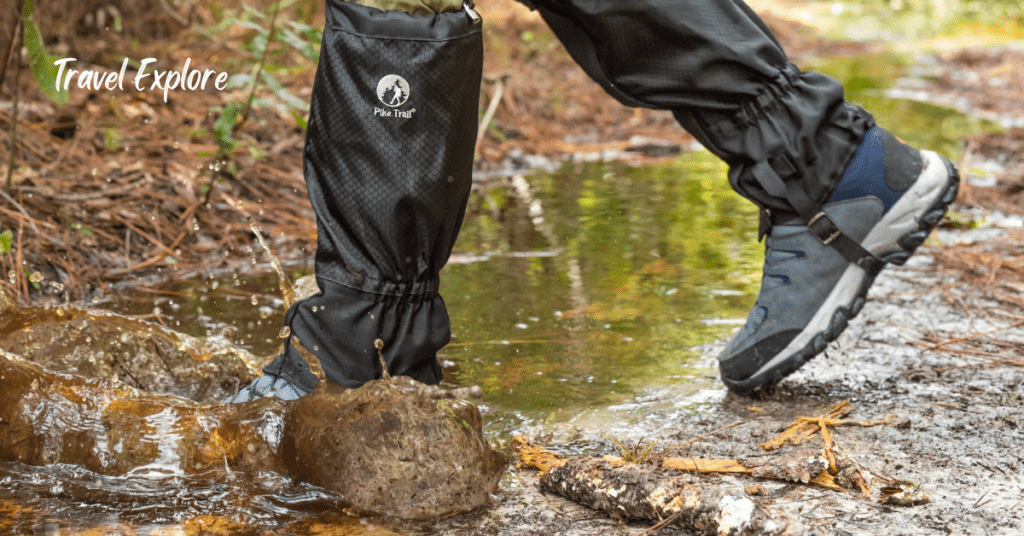
Gaiters are essential for keeping water, mud, and debris out of your boots. Choose gaiters that are lightweight yet durable, with secure attachment points to your boots. Gaiters are an essential piece of gear for hikers, especially when hiking in the rain.
These protective coverings are worn over your hiking boots and lower legs to keep rain, mud, and debris out of your footwear and pants. When it rains, moisture can quickly seep into your boots, causing discomfort and increasing the risk of blisters.
Gaiters provide a barrier against this, keeping your feet dry and comfortable. One of the main advantages of wearing gaiters while hiking in the rain is their ability to prevent water from entering your boots.
Rainwater can easily run down your legs and into your boots, but gaiters act as a shield, directing the water away from the openings at the top of your boots. This helps to keep your feet dry and warm, even in wet conditions.
Moreover, gaiters also protect your pants from getting soaked and muddy. When hiking in the rain, the lower portion of your pants is particularly vulnerable to getting wet from rain and splashes.
Gaiters cover this area, preventing water from soaking through and keeping your pants dry. This is especially important in colder climates, where wet pants can lead to discomfort and even hypothermia.
Conclusion & Recap
Hiking in the rain can be a rewarding experience if you have the right gear and preparation. Waterproof Clothing, Shelter and Protection, Navigation and Communication . By investing in quality waterproof gear and following safety precautions.
You can enjoy the beauty of nature even when the weather doesn’t cooperate when you go for hiking. So, next time the forecast calls for rain, don’t let it deter you from hitting the trails—just gear up and embrace the adventure.
FAQS
Are waterproof hiking boots necessary for hiking in the rain?
Yes, waterproof hiking boots are essential to keep your feet dry and comfortable in wet conditions.
Do I need a waterproof jacket for hiking in the rain?
Absolutely, a waterproof jacket will keep you dry and shielded from rain and wind while hiking.
Are gaiters necessary for hiking in the rain, and how do they help?
Gaiters are highly recommended as they keep rain, mud, and debris out of your boots and pants, ensuring your comfort and dryness.
Should I bring extra socks for hiking in the rain?
Yes, extra socks are crucial for keeping your feet dry and preventing blisters, especially on longer hikes
Is it important to bring a waterproof cover for my backpack when hiking in the rain?
Absolutely, a waterproof cover will protect your gear and keep it dry during rainy hikes.

